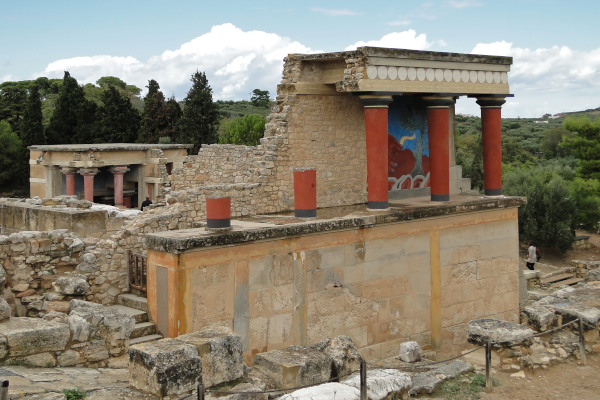Knossos, or the Palace of Knossos, is the most significant archaeological site from the Bronze Age. Archaeologists argue that it was the administrative and cultural center of all Minoan civilization.
The palace is a labyrinth full of halls, houses, and storage rooms while in the middle of the city there is a big square. The walls of the palace are full of paintings depicting the everyday life of the citizens, a great and useful source to learn about the life of people during the Late Bronze Age.
The ruins of the Palace were discovered by a Cretan merchant in 1878. Since then, there was a number of groups that tried to make a complete excavation of the Palace but failed. This was until March 1900, when the noble Englishman Arthur Evans bought the whole region, organized a full excavation, and brought the Palace to light, after thousands of years.
